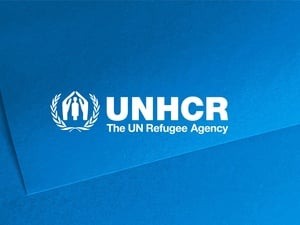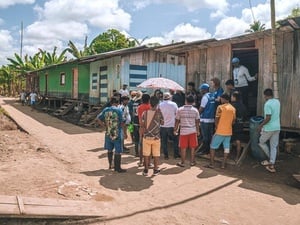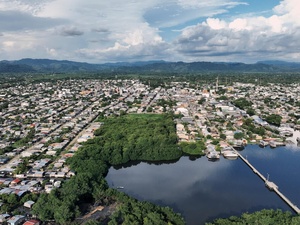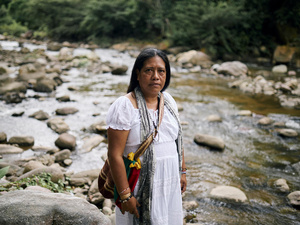Renaissance of former Colombian ghost town threatened by new violence
Renaissance of former Colombian ghost town threatened by new violence

The school has reopened in the small river settlement of San Miguel, but these boys will only be able to study there until the age of 11.
SAN MIGUEL, Colombia, February 20 (UNHCR) - Two years ago, San Miguel was a ghost town on the banks of the San Juan River in Colombia's Pacific rainforest. Today, it is slowly coming back to life.
The wooden huts are freshly painted in bright pink and blue; a small store sells soft drinks and a few tins of canned food; and at midday, children in dark blue uniforms come running out of the tin-roofed school.
But its renaissance could be shortlived - like dozens of other settlements of Afro-Colombian and indigenous communities along the river, it is again threatened by violence. Fighting between rival groups has flared and is spreading north along the river into the Chocó region.
"Both indigenous and Afro-Colombian communities are very vulnerable: they are either at high risk of displacement or they want to go but are stranded," said Julio Roberto Meier, UNHCR representative in Colombia.
"It is extremely important that other countries know what life is like for these small communities living in conflict zones," he added, while noting that UNHCR staff had visited settlements on the San Juan River last week with senior diplomats from France, the Netherlands, Spain and Sweden. They were able to witness at first-hand the humanitarian situation in this remote and isolated part of Colombia.
In Geneva on Tuesday, meanwhile, UNHCR appealed for more than US$14 million to fund its work on behalf of hundreds of thousands of people displaced in Colombia. Some of these people come from communities on the San Juan River. "In places like San Miguel or Bebedó, the prospect of losing everything again is especially discouraging for people who have already been through so much," Meier said.
Like 85 percent of the population of Chocó, the community of San Miguel is Afro-Colombian. Its 1,500 inhabitants first fled the settlement when fighting erupted between rival armed groups in late 2004. They joined thousands of people displaced from other settlements in the small towns further upriver.
"We had never lived in a city before and did not know what to do. In town you have to buy everything you eat, even a banana or a mango costs money," said José, who was one of the first to return to San Miguel with his eight children in the summer of 2005.
Fighting resumed a few months later and the whole family was forced to flee once more. They came back last year and today about half the population of San Miguel has returned. They face a constant struggle against insecurity and poverty.
San Miguel lacks even the most basic infrastructure. There was once electricity, but the wooden electricity poles rotted and collapsed and have never been replaced. The clinic remains closed, while the school reopened for children up to the age of 11 only.
Water comes from the river and is used for cooking, washing and drinking. Before it was used for fishing too, but there are very few fish left in the river because of mercury contamination.
And once again the spectre of violence looms over San Miguel. One-by-one, the surrounding villages are emptying. The inhabitants of Santa Rosa - located an hour away to the south by boat - were the last to move out. They fled after armed men in uniforms, who said they were not part of the regular armed forces, arrived on December 25.
"We told them that we were going to a New Year's Eve party downriver. We took only the clothes we were wearing, party clothes, so they would not guess we were leaving for good," said Denise, a 55-year-old grandmother, who arrived in the small town of Istmina on December 27.
She has since been sharing a riverside shack with 13 other people. They have been well received, she said, but it was hard to live in other people's homes. She can never get used to it, even though it is the third time since 2004 she has sought refuge in the town.
About 10 percent of the population of Chocó is currently displaced. Many, like Denise and Jose, have tried several times to go back home, only to face more violence and insecurity.
"As long as fighting goes on, the conditions for safe return do not exist," said Meier. "UNHCR is doing what it can to help with lobbying for basic infrastructure and other forms of support. But in the end we cannot guarantee their physical safety and without that everything else can be destroyed in a day."
There are 3 million internally displaced people in Colombia, the biggest single population of concern to UNHCR anywhere in the world. As part of the 2007 Campaign for the Rights of Displaced People in Colombia, the refugee agency has joined forces with more than 130 other organisations to promote and lobby for their rights.
By Marie-Hélène Verney in San Miguel, Colombia









